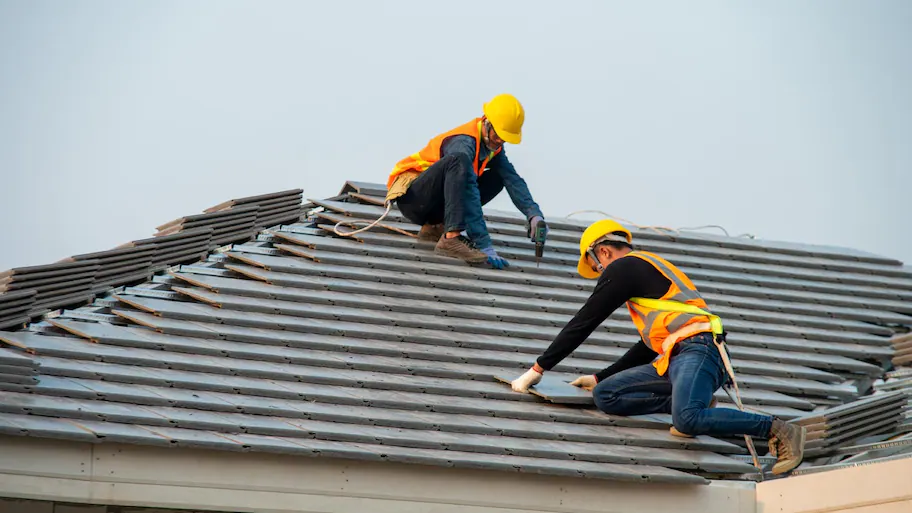Replacing a roof is a significant undertaking that not only impacts your home’s appearance but also its functionality and long-term value. Whether you’re a homeowner planning a roof replacement or a contractor taking on a project, one crucial question arises: “Do you need a building permit to replace a roof?” The answer to this question can vary depending on several factors, and this article will provide you with the insights you need to navigate the permitting process effectively.

Understanding Building Permits
What Are Building Permits, and Why Are They Required?
Building permits are formal approvals issued by local government authorities that grant permission for construction, renovation, or repair projects. The primary purpose of these permits is to ensure that construction work meets safety, zoning, and building code requirements. Building codes vary by location, but they generally address structural integrity, fire safety, electrical and plumbing systems, and other critical aspects of a building’s safety and performance.
Roof Replacement and Building Permits
The Roof Replacement Scenario
Roof replacement often falls into a category that requires building permits, but it’s essential to consider the specific circumstances and regulations in your area. Here are some key factors to keep in mind:
- Local Regulations: Building codes and permit requirements are determined at the local level. What is considered a minor roof repair in one jurisdiction may require a permit in another. Research the regulations in your area to understand the exact requirements.
- Type of Roofing Work: The extent of your roofing project can influence permit requirements. If you’re conducting a complete tear-off and re-roofing with significant structural changes, it’s more likely to require a permit. On the other hand, simple roof repairs like fixing a few shingles may not require one.
- Historic Districts: If your home is in a historic district or has historical significance, you may need additional approvals or permits to ensure that the roofing material and design conform to historical preservation standards.
- HOA Regulations: In some cases, homeowners’ associations (HOAs) may have specific guidelines related to roofing materials, colors, or styles. Compliance with these rules may be a prerequisite for any roofing work.
When Do You Need a Permit?
Common Roofing Projects That Require Permits
- Complete Roof Replacement: A full roof replacement, particularly if it involves structural alterations, typically requires a building permit. This ensures that the new roof complies with local codes and standards.
- Structural Changes: Any modifications to the roof structure, such as raising or lowering the roofline, require permits to ensure the changes adhere to building regulations.
- Additions and Extensions: If you’re adding new sections to your roof or expanding your living space into the attic, you’ll likely need a permit to address structural changes, insulation, and other factors.
- Historical or Conservation Areas: Homes in historical or conservation areas often have strict regulations to preserve their architectural integrity. Roofing work, even if considered minor elsewhere, may necessitate permits and adherence to specific guidelines.
When Don’t You Need a Permit?
Roofing Work That Typically Doesn’t Require Permits
- Minor Repairs: Small-scale roof repairs, such as fixing a leak or replacing a few damaged shingles, usually do not require permits.
- Re-Roofing Over Existing Material: If you’re adding a new layer of roofing material over the existing one without any structural changes, it may not require a permit. This process, known as re-roofing, is considered less invasive.
- Routine Maintenance: Routine maintenance, such as cleaning gutters, removing debris, or applying roof coatings, typically does not need a permit.
The Permit Application Process
Navigating the Permitting Journey
If your roofing project does require a permit, follow these steps to ensure a smooth application process:
- Contact Your Local Building Department: Reach out to your local building department or authority to confirm the specific requirements for your area. They can provide guidance on the necessary documentation and permit fees.
- Prepare Documentation: Gather all required documents, which may include project plans, specifications, and a roofing contractor’s license. Your contractor may assist you with this process.
- Submit the Application: Complete the permit application, making sure to provide accurate information about the project, property, and materials to be used.
- Pay Fees: Pay the required permit fees, which vary depending on the scope of the project and location.
- Plan Reviews and Inspections: The building department will review your application and may conduct inspections throughout the project to ensure compliance with codes and regulations.
Conclusion
The need for a roofing permit varies based on project, local rules, and location. Research and comply with local codes and safety standards. Consult your local building department or a roofing expert if unsure about the permitting process for a successful roof replacement.



Leave a Reply